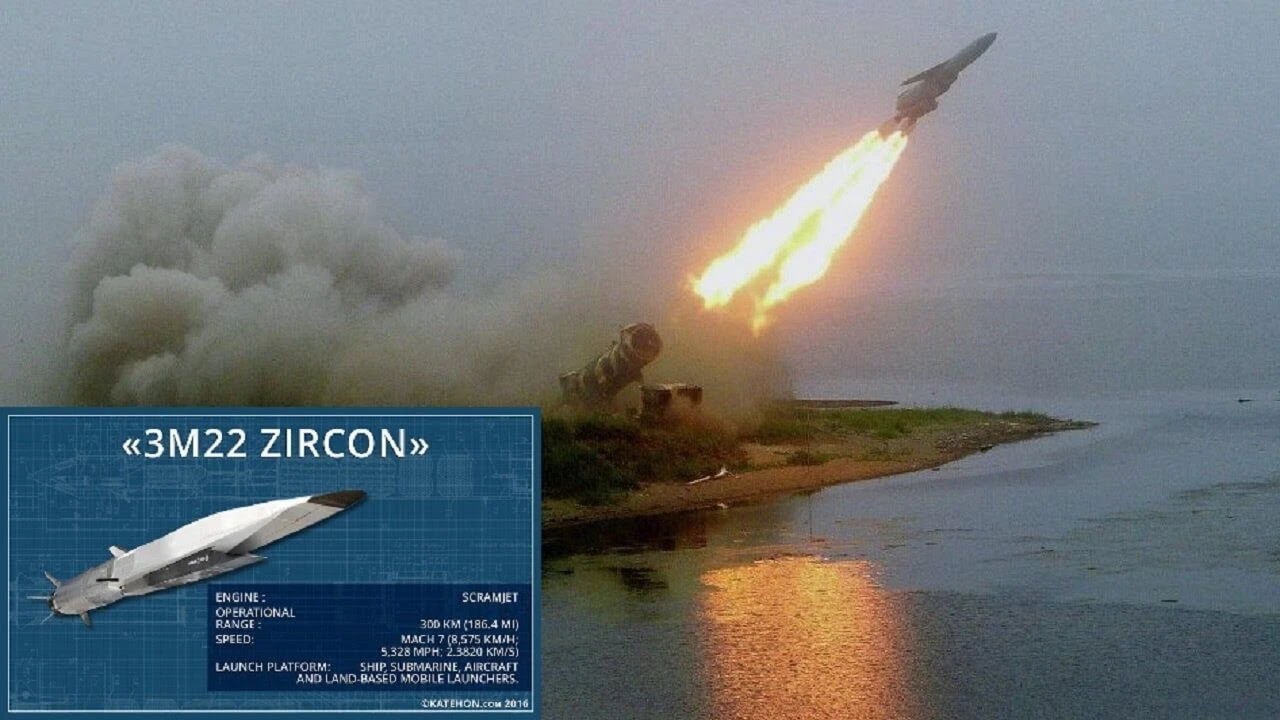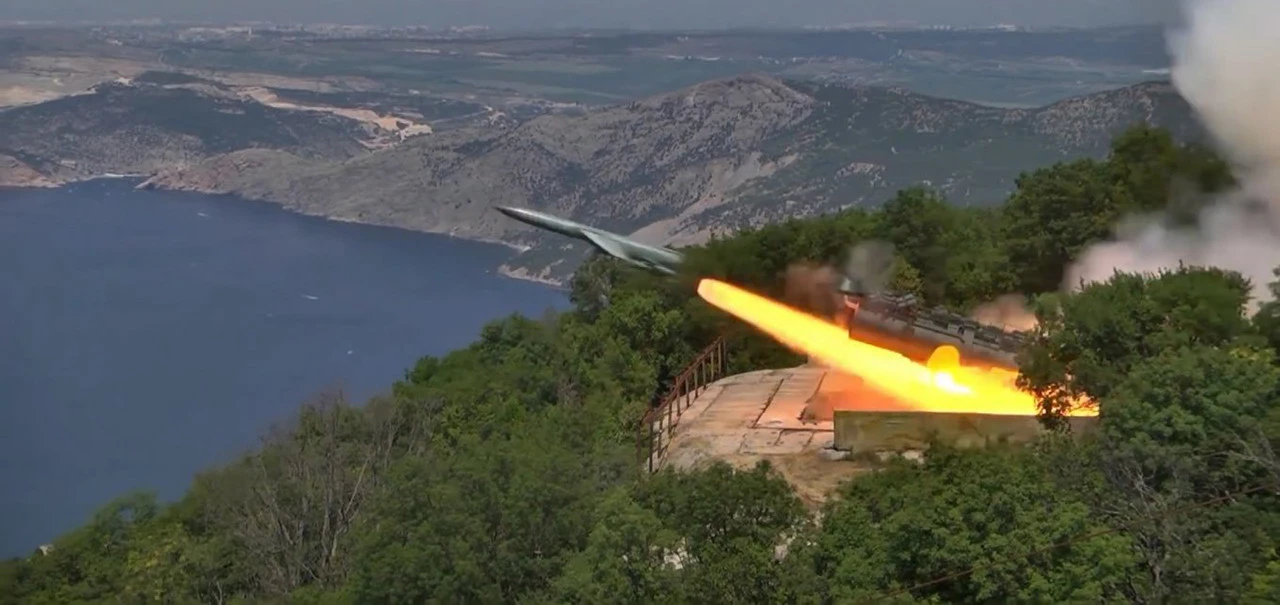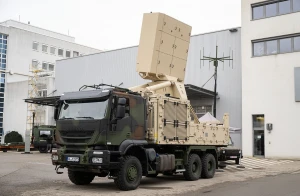
Missile attack on Kyiv, debunking characteristics of Zircon missile. Column by Serhiy Zgurets
For 4 days in a row, Russia has been conducting missile attacks on Ukraine. It used various types of missiles and 'kamikaze' drones. And on March 25, Zircon hypersonic missiles were added to this arsenal once again
Attack on Ukraine's capital with Zircon missiles
So, for 4 days in a row, Russia has been conducting missile attacks on different regions of Ukraine. It is using various types of missiles and 'kamikaze' drones. If we summarize the official data of the Air Force Command, the enemy used about 98 cruise missiles and more than two dozen ballistic missiles, at least 7 Kinzhal missiles and 5 Kh-22 missiles. But yesterday, March 25, hypersonic Zircon missiles were added to this arsenal once again.
We have analyzed the wreckage of these missiles by contacting experts from various ministries. Indeed, there is confirmation that the Russian army this time used at least two Zircon missiles, which are the newest and most secretive missile in the Russian arsenal, which the Kremlin claims to have unparalleled characteristics. But Ukrainian air defense forces have again intercepted this missile. Why do I say again, because this is at least the 5th time that Zircon has been used in Ukraine. There were strikes on Zaporizhzhia, then on February 7, there were two strikes on Kyiv with these missiles, and now we are seeing the use of Zircon in the Ukrainian capital again.

Why do we say that it was Zircon? Because we found much larger debris compared to the previous strike on the capital. All of these pieces of debris are marked with indices related to the 3M-22 missile. And several pieces of debris have indices 3B-22, 3L-22, which confirm that the debris belongs to this missile. But questions arise: what technical characteristics does this missile have? How does it affect our air defense system?
In fact, Russia says that this missile has a speed of Mach 9. That is, a hypersonic missile that is at least twice as fast as the Kinzhal used to launch from aircraft. But based on the characteristics that have been recorded, we can say that at the initial part of the flight trajectory, this missile has a speed of Mach 5. Then, on the middle trajectory, at an altitude of about Mach 7. And in the area where the Zircon was shot down by our air defense systems, it was within Mach 4-4.5. In other words, the missile is not actually hypersonic in this area, which is one of the debunking of such excessive characteristics that Russian propaganda claims.
As for the range of this missile, according to various estimates, it ranges from 600 to 1,000 kilometers. So far, these figures need to be verified. As for the accuracy, there are doubts that it is a high-precision missile, more like the Kh-22 that hits an area rather than specific targets, because there are doubts about the effectiveness of the missile's control system. The Zircon is being shot down, which is extremely important. And this suggests that the American Patriot system is fully capable of handling this new Russian development.
As for the rate of production of Zircon missiles, we are still trying to collect, analyze and evaluate such data. I think that this rate is much lower than the rate of production of Kinzhals. Let me remind you that the production rate of the Kinzhal missile is about 4 or 6 missiles per month.
The Zircon missile was designed to be launched from launchers on ships or submarines. It is not a missile adopted by the Russian Federation, although the Russian side claims that an experimental period of use and application of this missile is underway.

Photo: https://defence-ua.com/
If it was launched from Crimea, it was most likely launched from transport and launch containers that could have been attached to some kind of launcher. So far, we cannot say for sure which launcher this missile was launched from, but we understand that the countermeasures strategy should include two components.
The first is to combat this missile with air defense systems that demonstrate the capabilities of the Patriot system, which Ukraine has at its disposal.
The second component is hunting for the launchers themselves. This work does not look easy, because Russia has a significant number of different missiles that are used from launchers. Hunting for enemy Bastion and Iskander tactical missiles using intelligence data and possibly long-range strike systems that we can receive from our partners is another component to minimize the risks from Zircon missiles. It is not an easy task, but we understand that countering these missiles should not rely solely on how many Patriot systems we have.
Destruction of the Russian Black Sea Fleet facilities
And then we will talk about another topic that is also related to the strike. On the night of March 24, the Ukrainian Defense Forces launched a missile strike against the Russian forces in Crimea. This strike was comprehensive, because it targeted Russian ships, control systems, and airfields. We now have satellite images that allow us to draw certain conclusions about what exactly was hit and what was not. Let's talk about the implications of this for Russia's defense system in the still-occupied Crimea.
Ivan Kyrychevskyi, military expert at Defense Express, commented on the missile strike by the Ukrainian Air Force on Russian targets in Crimea. It was a complex strike, if we talk about the use of destruction means, because our drones could still work. In addition to hitting the central communication hub of the Russian Black Sea Fleet, several Russian ships were also hit, and we also have a nice bonus - the damage to an oil depot. Satellite images show that the building of the central communication center was destroyed from the inside. Based on the allegedly found wreckage, the Russians claim that it was a SCALP missile strike. We are not going to deny this version, we will just take it into account to understand what kind of munition could have been used.
The military expert added that as for the damage to Russian ships, an interesting story begins there, because as of March 24, two satellite images appeared that showed two Project 755 ships and said they were allegedly damaged. But then it turned out that one of the images showed the Yamal ship, which had a very large hole in its side, according to the Defence Intelligence of Ukraine. And the second ship, unfortunately, is our Konstantin Olshansky, which was captured by the Russians in 2014. As for the Azov landing ship, there is still some intrigue. By the way, according to statements by some official spokespersons, there is also an intrigue about the medium-sized reconnaissance ship Ivan Khurs. We will summarize all this data over the next week, as there will be new pleasant aspects.
Kyrychevskyi noted that it was very important to knock out the central communication hub of the Russian Black Sea Fleet because the Russians have changed their fleet management system, it seems, since January 1, 2024. Previously, it was subordinated to the headquarters of the southern district in Rostov, but now it reports directly to Moscow, which is essentially to the Kremlin and Putin. Now the Russians have broken down not only horizontally but also vertically, and this is after Russian Defense Minister Shoigu came there for a personal inspection. The destruction of the communications center may have demoralized its personnel, as they received an even more painful blow after the change of commander. If the Ukrainian Defense Forces had planned to paralyze the Black Sea Fleet as the enemy's operational and strategic grouping in Crimea, and only then aim at the Crimean bridge, this task is gradually being accomplished, and it is the paralyzing of the Russian Black Sea Fleet that is being achieved.
Ivan Kyrychevskyi noted that the Russians have 7 amphibious ships intact and ready for use in the Black Sea. And the Russian Black Sea Fleet can be congratulated on the fact that it has only two amphibious ships of the old project 1171 Tapir, and the other 5 belong to the Northern or Baltic Fleets of the Russian Federation. And here the question is no longer about landing in Odesa or logistics, because there is interesting and tangential news. Russian resources admit that they have 2,500 railroad tanks stuck at the entrance to the Crimean Bridge because the Russians are now afraid to let fuel tanks across the Crimean Bridge, so they are waiting to take them out by ferries and amphibious assault ships. Accordingly, we should demand an operation to destroy the Crimean bridge rather than to realize the Russian delusion that they will someday be able to land on Odesa. They wasted this chance in March 2022, and now they may not even remember it.
- News













































